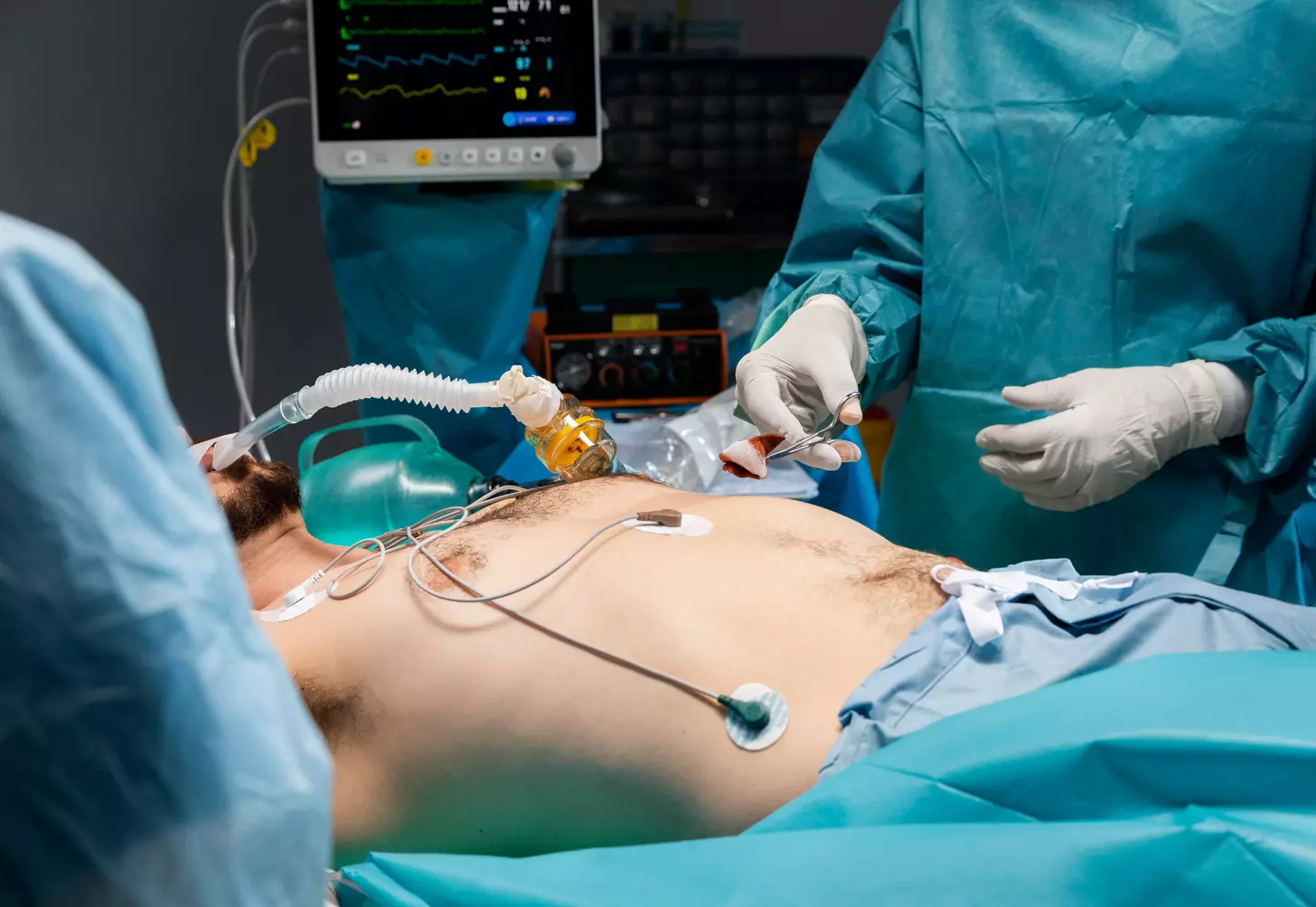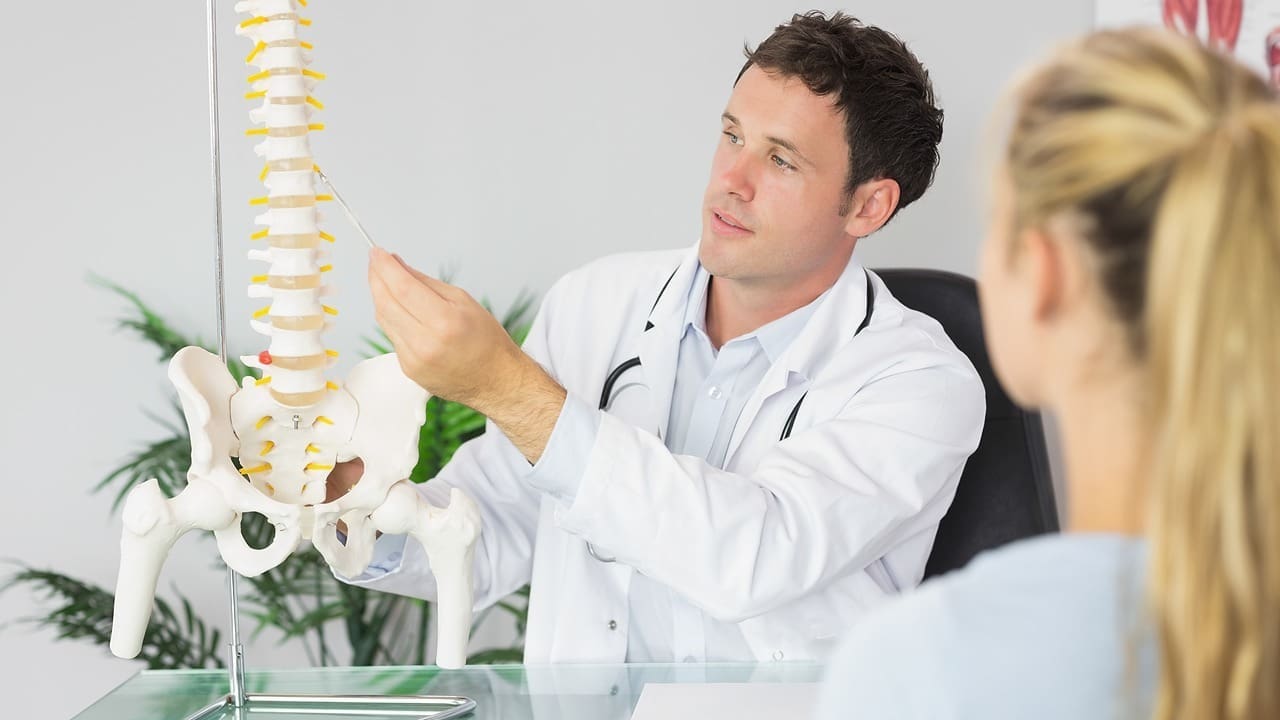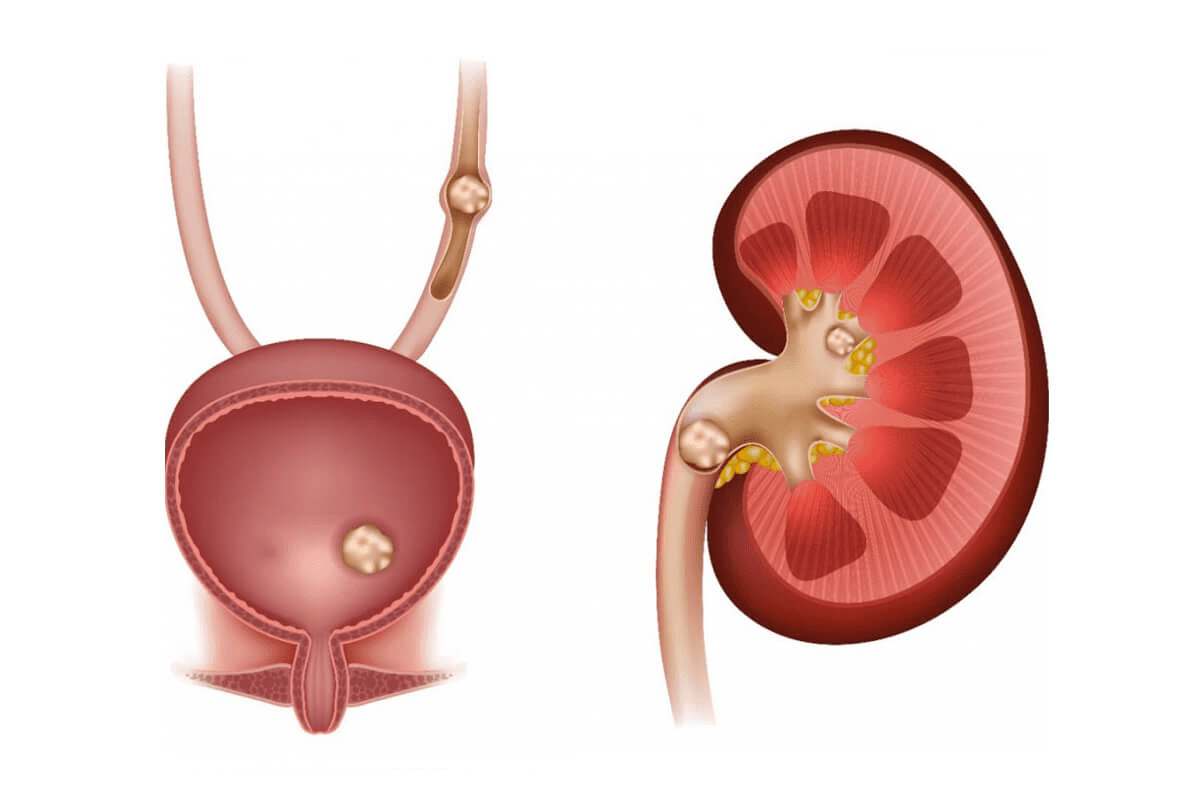Last Updated on November 27, 2025 by Bilal Hasdemir
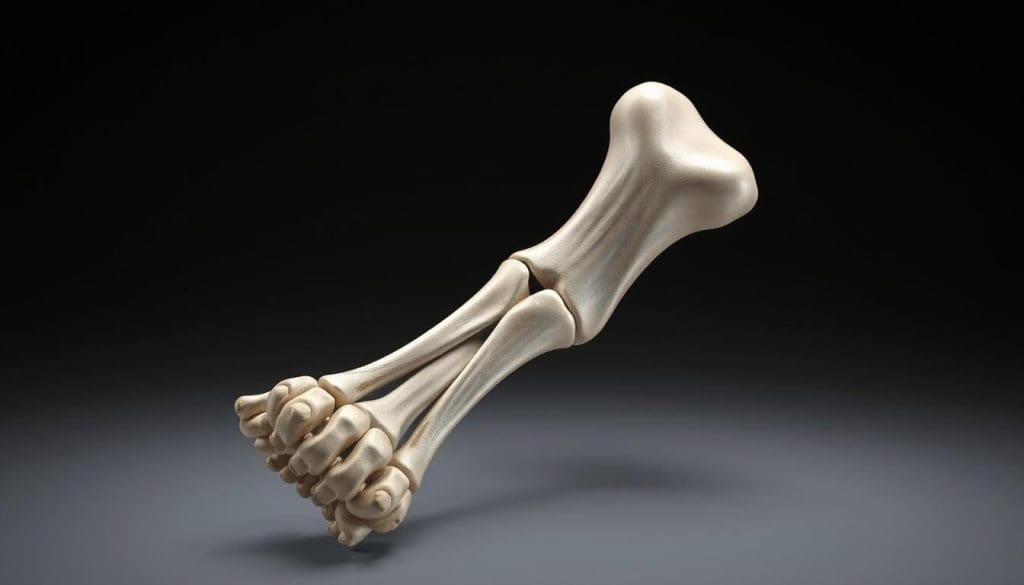
At Liv Hospital, we know how critical accurate diagnosis is for treating bone injuries. A CT scan for bone fracture has changed the game in medical imaging. They are super accurate in spotting bone fractures. In fact, studies show CT scans can find broken bones with up to 98% accuracy. This makes them a key tool for complex cases.
We count on CT scans to show bone injuries clearly. They give us detailed 3D images that help us decide on treatment. A detailed look at CT scans for bone fractures shows they’re great for finding fractures that X-rays can’t see. This is true for complex or small bones.
Key Takeaways
- CT scans offer high accuracy in detecting bone fractures, with studies showing up to 98% accuracy.
- 3D imaging provides detailed views of the fracture site, aiding in treatment planning.
- CT scans are specially good for complex fractures or those in small bones.
- They help spot problems like displacement or damage to nearby areas.
- CT scans guide treatment decisions with clear, cross-sectional images of bones.
The Science Behind CT Scan Technology for Bone Imaging
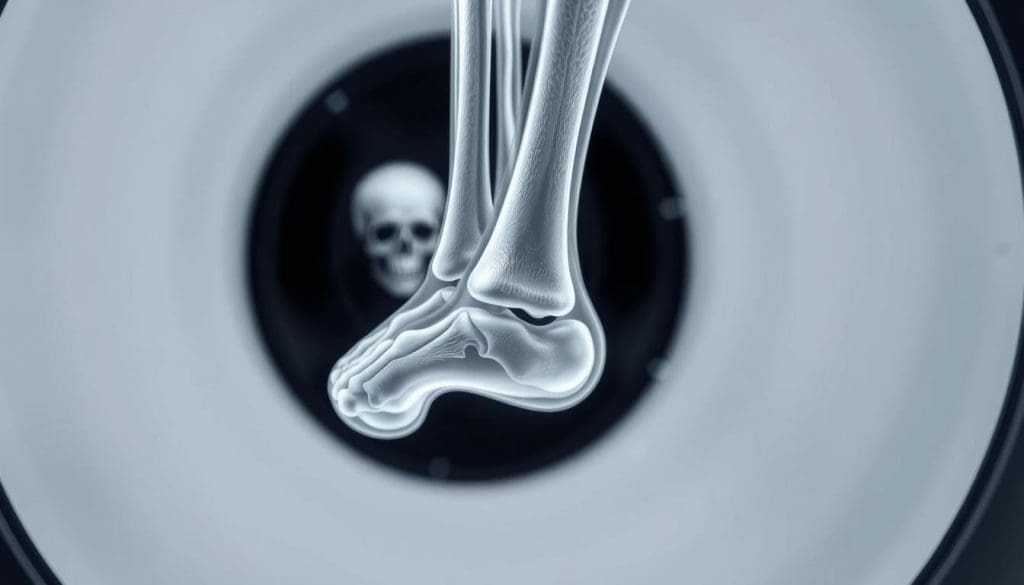
CT scan technology for bone imaging works by creating detailed, three-dimensional images of bones. This is key for diagnosing bone fractures accurately and understanding the injury’s extent.
CT scans combine X-rays and computer tech to make these detailed images. A CT scanner moves around the patient, sending out X-rays. These X-rays are absorbed differently by different tissues. This helps create cross-sectional images, or slices, of the bone.
How CT Scans Create Three-Dimensional Bone Images
To make three-dimensional bone images, several steps are taken. First, the CT scanner takes many cross-sectional images of the bone. Then, these images are turned into a 3D model using advanced computer algorithms.
This 3D model lets doctors see the bone from different angles. This gives a better understanding of the fracture. CT scans are very good at finding fractures, even in complex cases.
The Evolution of CT Technology in Fracture Detection
CT technology has improved a lot over time. Modern CT scanners can take higher resolution images faster. This makes scans more comfortable for patients and reduces the chance of errors.
New CT tech also includes special scanning methods. For example, low-dose CT scans use less radiation but keep image quality high. This is great for patients who need to have scans often to check on healing.
| Feature | Traditional CT Scan | Modern CT Scan |
| Resolution | Lower | Higher |
| Scanning Time | Longer | Faster |
| Radiation Exposure | Higher | Lower (with low-dose protocols) |
| 3D Reconstruction Capability | Limited | Advanced |
Understanding CT scan technology and its growth shows its big role in fracture care today. CT scans help doctors detect and assess bone fractures well. This has changed how we plan treatments and improve patient care.
CT Scan for Bone Fracture: Understanding Accuracy Rates
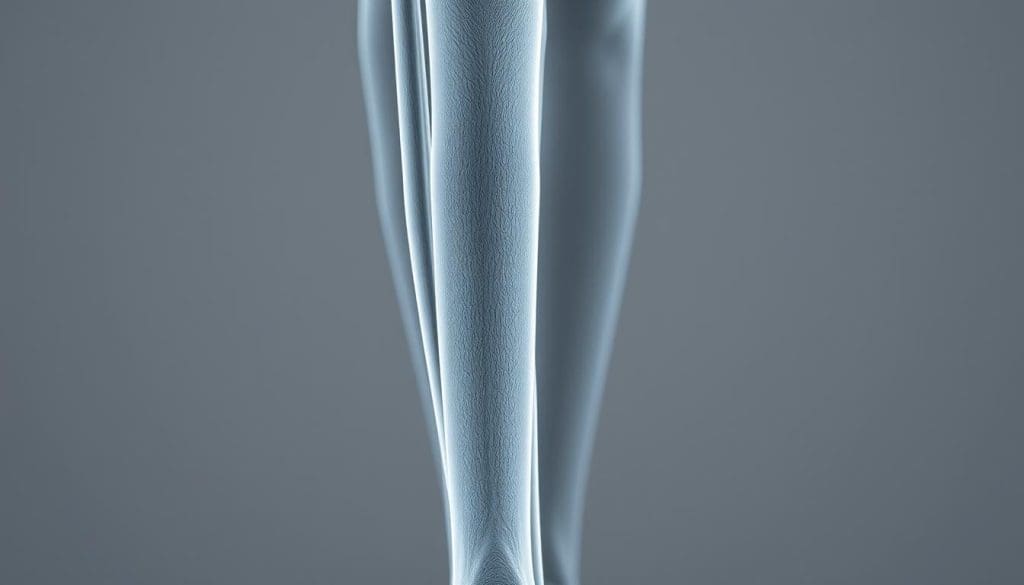
Knowing how accurate CT scans are for bone fractures is key for doctors and patients. The precision of CT scans helps make treatment plans better and improves health outcomes.
Clinical Studies Demonstrating 98% Detection Accuracy
Many studies have looked into how well CT scans find bone fractures. They show that CT scans can spot fractures very accurately, about 98% of the time. This is thanks to the latest CT scanner tech, which gives clear images of bones.
A study in a top medical journal showed CT scans are 98% sensitive in finding fractures. This high success rate makes CT scans a trusted tool in orthopedic and emergency care.
“The use of CT scans has revolutionized the diagnosis of bone fractures, providing unmatched accuracy and detail.”
A leading orthopedic surgeon
Factors That Influence CT Scan Precision in Fracture Diagnosis
Even though CT scans are very accurate, some things can affect their precision. These include:
- The quality of the CT scanner and its technology
- The expertise of the radiologist reading the scan
- The patient’s condition and ability to stay calm during the scan
- The specific location and type of fracture
The table below lists important factors that can change CT scan accuracy and how they might affect fracture diagnosis:
| Factor | Impact on Accuracy |
| Scanner Technology | High-resolution scanners improve detection accuracy |
| Radiologist Expertise | Experienced radiologists can spot subtle fractures better |
| Patient Condition | Moving during the scan can make images less clear and less accurate |
| Fracture Type | Complex or thin fractures are harder to find |
Knowing these factors helps doctors use CT scans better for diagnosing bone fractures. This ensures the highest accuracy possible.
When Will a CT Scan Show Broken Bones? Clinical Indications
CT scans are key in finding fractures, both in urgent and routine cases. They help us make accurate diagnoses. This guides how we treat patients.
Emergency Scenarios Requiring Immediate Bone CT Imaging
In emergencies like severe trauma or accidents, CT scans are first choice. Immediate CT imaging is vital for complex fractures or severe symptoms.
For example, in high-energy trauma, like car crashes, CT scans show the full extent of injuries. This quick check lets doctors act fast to treat.
Non-Emergency Applications for Fracture Confirmation
CT scans also help in non-emergency cases to confirm fractures. This is when X-rays are unclear or when a fracture is suspected despite unclear initial scans.
For instance, in stress fractures or osteoporosis, CT scans give detailed images. They help confirm the diagnosis and plan treatment.
We also use CT scans to check how fractures are healing. This is important in complex cases or when there’s doubt about the fracture’s stability.
CT Scans vs. X-rays: Comparative Accuracy for Fracture Detection
CT scans and X-rays are both used to find fractures. But, CT scans are more accurate, mainly for hard-to-spot fractures. X-rays are often the first choice, but CT scans are better for detailed views.
We’ll look at why X-rays have limits and how CT scans can show more. This is key for correct diagnosis and treatment plans.
Limitations of Traditional X-rays in Complex Fracture Cases
X-rays are common for finding fractures because they’re easy to get and cheap. But, they’re not perfect, mainly for tricky fractures. They show a two-dimensional view of a three-dimensional body, making it hard to see some fractures.
Key limitations of X-rays include:
- Hard to spot non-displaced or thin fractures
- Can’t see complex or broken-up fractures well
- Don’t show soft tissue injuries well
These issues can lead to wrong or late diagnoses. A study on PubMed Central shows the trouble with X-rays for some fractures.
How CT Scans Reveal Subtle Fractures Missed by X-rays
CT scans are better than X-rays for finding small fractures. They give detailed, cross-sectional images. This is key when X-rays don’t show anything or when patients keep feeling pain.
The benefits of CT scans for fracture detection include:
- Great at finding fractures that X-rays miss
- Shows complex fracture patterns well
- Can see soft tissue injuries too
To show how CT scans and X-rays compare, look at this table:
| Imaging Modality | Fracture Type | Detection Accuracy |
| X-ray | Simple, displaced fractures | High |
| X-ray | Complex, comminuted fractures | Moderate |
| CT Scan | Simple, displaced fractures | High |
| CT Scan | Complex, comminuted fractures | Very High |
| CT Scan | Non-displaced or occult fractures | High |
In summary, while X-rays are useful, CT scans are better for finding complex and small fractures. The choice between them depends on the situation and the need for detailed images.
Does a CT Scan Show Bones Better Than MRI?
CT scans and MRI are both important tools for doctors. But they are used for different things. CT scans are great for showing bone details. MRI is better for soft tissues like muscles and tendons.
Choosing between CT scans and MRI depends on what the doctor needs. Let’s look at how they compare for finding bone fractures.
Can MRI Detect Broken Bones as Effectively as CT?
MRI is top-notch for seeing soft tissues. But for bone fractures, CT scans are usually better. They show bone details clearly.
But MRI can spot some fractures that CT scans miss. It’s good at finding stress fractures or hidden breaks. MRI is also great at showing bone marrow swelling.
When MRI Complements CT in Fracture Diagnosis
In some cases, doctors use MRI and CT scans together. This helps them understand the injury better. For example, MRI checks soft tissue damage in joint fractures. CT scans focus on the bone break.
To show how CT scans and MRI work together, let’s look at a table:
| Imaging Modality | Bone Fracture Detection | Soft Tissue Evaluation |
| CT Scan | High-resolution images of bone structures | Limited soft tissue detail |
| MRI | Can detect certain fracture types, like stress fractures | Excellent for soft tissue visualization |
Knowing what each tool does best helps doctors decide when to use them. This is key for diagnosing and treating bone fractures.
Specialized Applications: Bone Fracture Scan Techniques
CT scans have changed how we diagnose complex fractures, like those in the ankle and leg. We use the latest CT scan technology for accurate diagnoses. These are key for planning the best treatment.
Broken Ankle CT Scan: Detecting Complex Ankle Fractures
A broken ankle CT scan is great for finding complex ankle fractures that X-rays can’t show. The ankle’s detailed structure needs precise imaging to spot all fractures.
Recent studies show that CT scans are very accurate in finding ankle fractures. This is vital for planning surgery and getting the best results for patients.
| Fracture Type | CT Scan Accuracy | Clinical Utility |
| Simple Ankle Fractures | 95% | Effective for diagnosis and treatment planning |
| Complex Ankle Fractures | 98% | Critical for surgical planning and outcome prediction |
CT Scan of the Leg: Precision in Tibial and Fibular Fracture Diagnosis
A CT scan of the leg gives us precise info on tibia and fibula fractures. These bones are vital for standing and moving, so accurate diagnosis is essential.
CT scans give detailed images. This lets doctors see how bad the fracture is and plan the right treatment. It could be surgery or just rest and recovery.
Using CT scans’ advanced features, we can greatly improve care for complex leg fractures.
How Fracture CT Scans Guide Treatment Planning and Monitoring
Fracture CT scans are key in planning treatments and tracking healing. We use top-notch CT scan tech to get detailed images. These images are vital for assessing and managing bone fractures.
3D CT Imaging for Surgical Approach Planning
3D CT imaging has changed how we plan surgeries for complex fractures. It creates a 3D model of the fracture. This helps surgeons understand the injury better.
This info is key for planning the best surgery. It lowers the risk of problems and boosts patient results.
For example, with complex ankle fractures, 3D CT imaging helps surgeons see the fracture pieces and how they’re moved. This lets them plan the surgery carefully. They can pick the right spot for the cut, how to fix the fracture, and what tools to use.
| Benefits of 3D CT Imaging | Traditional Imaging | 3D CT Imaging |
| Visualization of Complex Fractures | Limited | Detailed 3D visualization |
| Surgical Planning Precision | Less precise | Highly precise |
| Risk of Complications | Higher | Reduced |
Using Sequential CT Scans to Monitor Bone Healing Progress
Sequential CT scans help track bone healing. They let doctors check if the treatment is working. If not, they can change the plan.
This method is great for complex or risky fractures. It lets us watch them closely. We can adjust the treatment to fit each patient’s needs.
Limitations and Considerations When Using Bone CT Scans
CT scans are great for finding bone fractures. But, they have some limits. It’s important to think about these when choosing to use them.
Radiation Exposure: Balancing Diagnostic Benefits and Risks
One big worry with CT scans is radiation. They use X-rays to see inside the body. This can increase the risk of cancer or genetic problems. But, the benefits of quick and accurate diagnosis are key, too.
Modern CT scanners aim to use the least amount of radiation needed. They use special techniques to lower exposure while keeping images clear.
| Radiation Dose Considerations | Diagnostic Benefits | Risk Mitigation Strategies |
| Potential risk of cancer or genetic mutations | High accuracy in fracture detection | Dose modulation |
| Exposure to ionizing radiation | Detailed imaging for complex fractures | Iterative reconstruction algorithms |
| Higher dose compared to X-rays | Guiding surgical planning and monitoring | Low-dose protocols for specific exams |
Clinical Scenarios Where Alternative Imaging May Be Preferred
CT scans work well for bones, but not always. For kids or pregnant women, MRI or ultrasound might be better. They use less radiation.
For soft tissue damage or checking the spinal cord, MRI is better. It shows soft tissues better. For follow-ups, other scans can help avoid too much radiation.
It’s key for doctors to know these limits. This helps them choose the best imaging for bone fractures. By looking at both sides, we can give better care.
Conclusion: The Critical Role of CT Scans in Modern Fracture Care
CT scans are now key in finding fractures and planning treatments. They are very useful in emergencies when fast and correct diagnosis is needed. Their high accuracy makes them essential for doctors.
So, will a CT scan show broken bones? Yes, thanks to its advanced tech and clear images. CT scans give detailed 3D pictures, helping spot even complex fractures.
But CT scans do more than just diagnose. They help plan treatments and check how healing is going. This lets doctors create specific plans and track progress closely.
In short, CT scans are vital in treating fractures today. They offer a dependable and precise way to diagnose and manage bone fractures. As they keep getting better, they will help patients even more.
FAQ
Will a CT scan show broken bones?
Yes, a CT scan is very good at finding broken bones. It shows detailed 3D images that help doctors plan treatment.
Does a CT scan show bones better than MRI?
CT scans are better at finding bone fractures than MRI. But, MRI can also help by showing soft tissue injuries.
Can MRI detect broken bones?
Yes, MRI can find broken bones. But, it’s not as good as CT scans for complex fractures. It’s better for soft tissue injuries.
What is the accuracy rate of CT scans in detecting bone fractures?
Studies show CT scans can find bone fractures with up to 98% accuracy.
When is a CT scan used to detect broken bones?
Doctors use CT scans in emergencies and when they need to confirm a fracture.
How does a CT scan compare to X-rays for fracture detection?
CT scans are more accurate than X-rays, showing even small fractures that X-rays might miss.
What are the limitations of using CT scans for bone fracture detection?
While CT scans are great, they have limits. One is radiation exposure. Sometimes, other imaging is better.
Can a CT scan be used to monitor bone healing progress?
Yes, CT scans can track how bones heal. This helps doctors plan treatment.
Is a CT scan necessary for diagnosing all types of fractures?
No, not always. The right imaging depends on the fracture and the situation.
How do CT scans create three-dimensional bone images?
CT scans use advanced tech to make detailed images. These are then turned into 3D, showing bones clearly.
Reference
- Avci, M., et al. (2019). Comparison of X-Ray Imaging and Computed Tomography in the diagnosis of knee bone fractures. PMC. https://pmc.ncbi.nlm.nih.gov/articles/PMC6843286/



